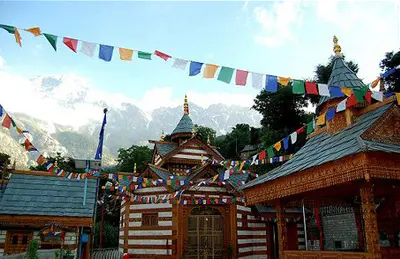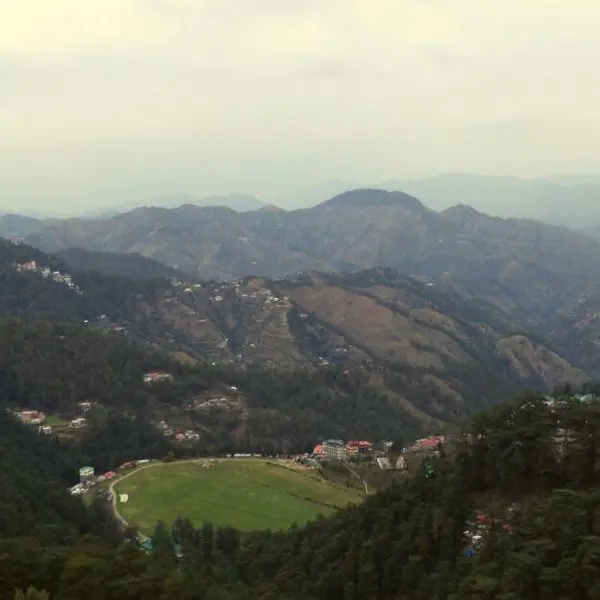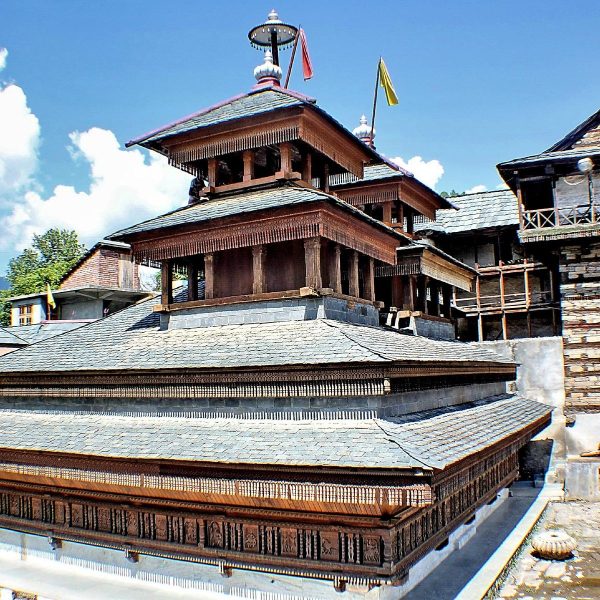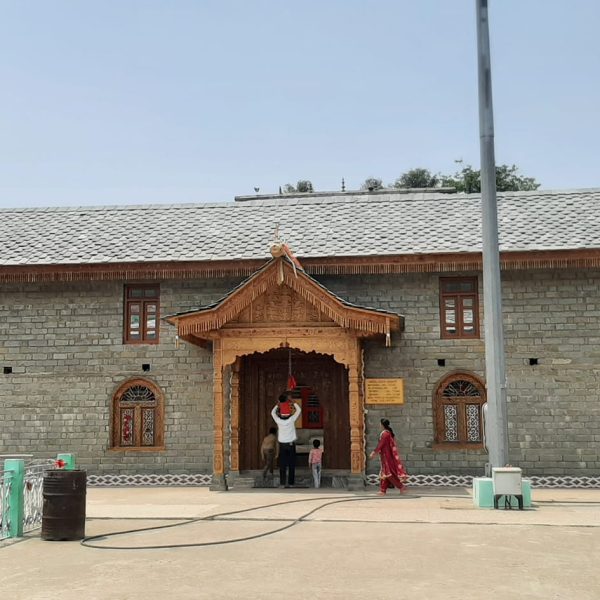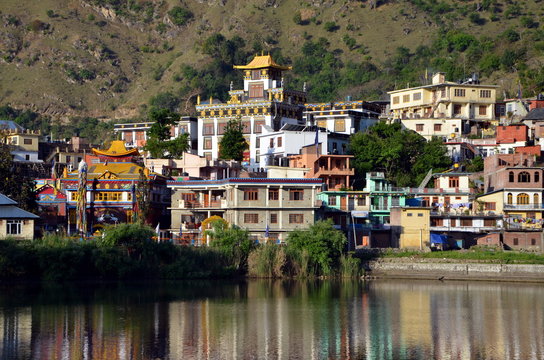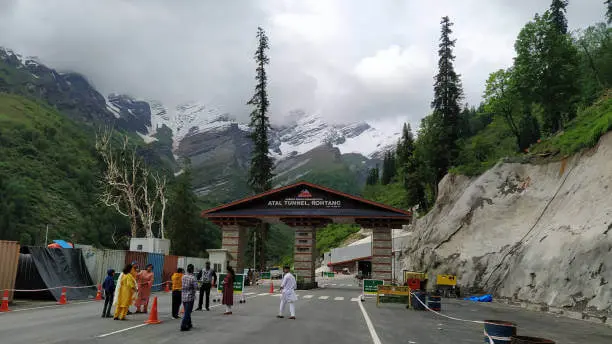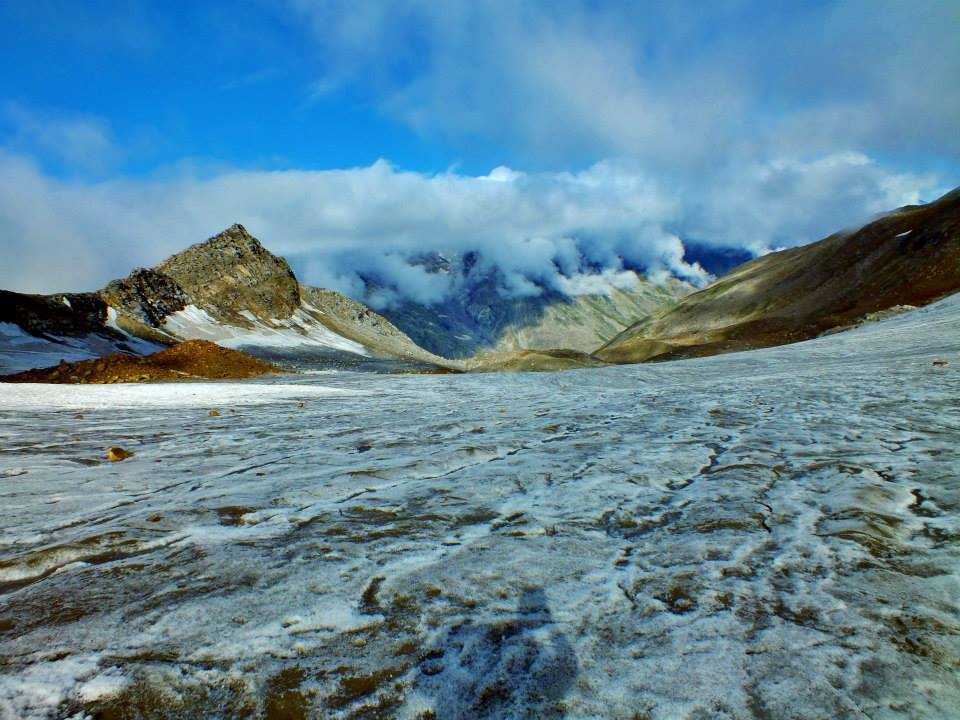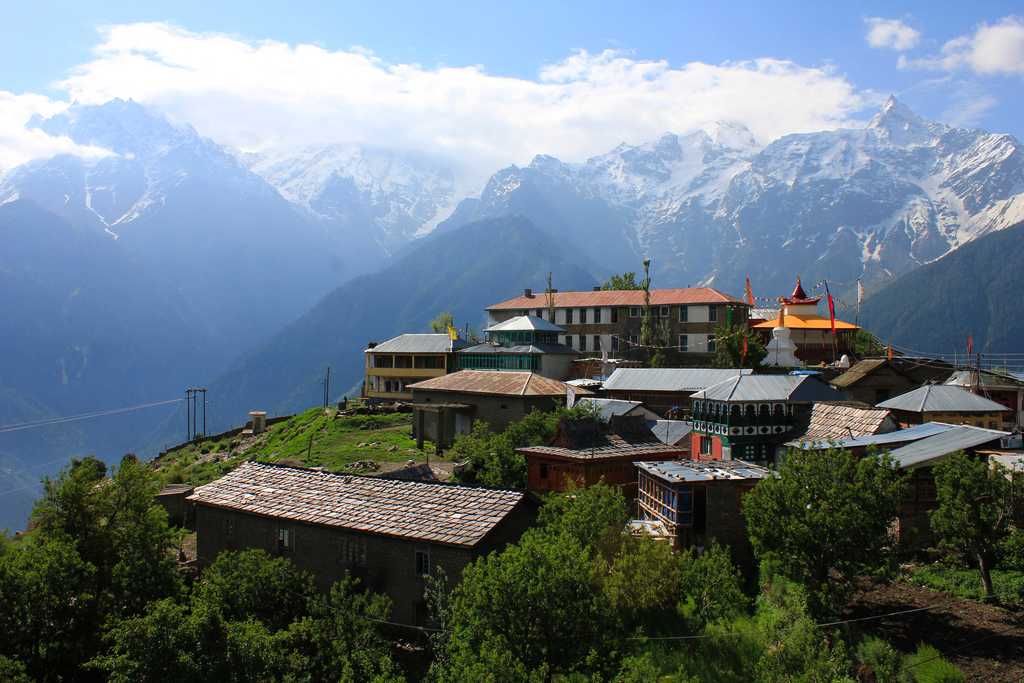Panchvaktra Temple Mandi: A Divine Destination with a Rich History
Your Title

15.1°C / 59.1°F
Sunny
Humidity: 18%
Wind: 4.3 km/h
Location Overview
Nestled in the picturesque hills of Himachal Pradesh, Panchvaktra Temple Mandi is a popular destination for those seeking spiritual solace and scenic beauty. This temple, dedicated to Lord Shiva, is renowned for its unique five-faced idol of the deity. In this article, we will delve into the history of the temple, how to reach it, its location, and the best time to visit.
Table of Contents
ToggleHistory of Panchvaktra Temple Mandi
The history of Panchvaktra Temple Mandi dates back to the 8th century, when it was built by Raja Sahil Varman, the founder of Mandi. Legend has it that Sahil Varman was an ardent devotee of Lord Shiva, and he wanted to build a temple that would be a fitting tribute to the deity. He chose a spot on the banks of the Beas river, surrounded by lush green forests and towering mountains, and constructed the temple there.
Over the centuries, the temple underwent several renovations and additions. In the 16th century, Raja Ajber Sen added a porch to the temple, while in the 17th century, Raja Sidh Sen added a mandap. The temple also has several beautiful carvings and sculptures that date back to the 16th and 17th centuries.
One of the most unique features of the Panchvaktra Temple Mandi is its five-faced idol of Lord Shiva. This idol is made of brass and is believed to be over 500 years old. According to legend, the five faces of the idol represent the five elements of nature – earth, water, fire, air, and ether. Devotees believe that offering prayers to this idol can bring them peace, prosperity, and happiness.
How to Reach Panchvaktra Temple Mandi
Panchvaktra Temple Mandi is located in the heart of Mandi town, which is well-connected by road and rail. The nearest airport is in Kullu, which is about 50 km away, while the nearest railway station is in Jogindernagar, which is about 55 km away.
If you are coming from Delhi or Chandigarh, you can take a bus to Mandi. There are several buses that ply between these cities and Mandi, and the journey takes about 8-10 hours. You can also hire a taxi from Delhi or Chandigarh to reach Mandi.
If you are coming from Kullu or Manali, you can take a bus or taxi to Mandi. The journey takes about 2-3 hours, depending on the mode of transport.
Once you reach Mandi, you can easily reach the temple by taking a taxi or auto-rickshaw. The temple is located in the heart of the town and is easily accessible.
Location of Panchvaktra Temple Mandi
Panchvaktra Temple Mandi is located in the Mandi district of Himachal Pradesh, which is known for its scenic beauty and rich cultural heritage. Mandi town is situated on the banks of the Beas river, surrounded by lush green forests and towering mountains. The town is also known as the “Kashi of the North” because of its numerous ancient temples and shrines.
Apart from the Panchvaktra Temple, Mandi is also home to several other important temples, such as the Bhootnath Temple, the Triloknath Temple, and the Tarna Temple. These temples are known for their intricate carvings, beautiful sculptures, and rich history.
In addition to its temples, Mandi is also known for its natural beauty. The town is surrounded by several picturesque valleys, such as the Kars Valley, the Joginder Nagar Valley, and the Sunder Nagar Valley. These valleys are known for their lush green forests, sparkling waterfalls, and serene atmosphere. Mandi is also a popular destination for adventure enthusiasts, as it offers several trekking and hiking trails that take you through some of the most beautiful landscapes in the region.
Best Time to Visit Panchvaktra Temple Mandi
The best time to visit Panchvaktra Temple Mandi is from March to June and from September to November. During these months, the weather is pleasant, and the skies are clear, making it ideal for sightseeing and outdoor activities. The monsoon season, from July to August, is not a good time to visit Mandi, as the region receives heavy rainfall, which can lead to landslides and flooding.
If you are planning to visit Mandi during the winter months, from December to February, be prepared for cold temperatures and snowfall. The town receives heavy snowfall during these months, which can make it difficult to travel around.
In conclusion, Panchvaktra Temple Mandi is a divine destination that offers a unique blend of spirituality and natural beauty. Its rich history, unique five-faced idol, and scenic location make it a must-visit destination for anyone visiting Himachal Pradesh. Whether you are a spiritual seeker or an adventure enthusiast, Mandi has something to offer for everyone. So, pack your bags and embark on a journey to this beautiful town, and experience the magic of Panchvaktra Temple Mandi for yourself.
Included/Exclude
Tour Plan and Itenary
The Panchvaktra Temple is prominently located in the heart of Mandi town, Himachal Pradesh, India. It stands at the sacred confluence of the Suketi and Beas rivers, making it easily accessible and a significant landmark.
The temple is dedicated to Lord Shiva, specifically in his five-headed form, known as Panchvaktra (or Panchbakhtar) Mahadev.
The five faces of Lord Shiva in the idol represent his five aspects or avatars, symbolizing different cosmic energies and principles:
- Aghora: The destructive nature.
- Ishana: Omnipresence and omnipotence.
- Tat Purusha: His ego/cosmic self.
- Vaamdeva: The feminine aspect.
- Rudra: The creative and destructive aspect. The Panchvaktra form is considered a union of all these aspects, representing Shiva's omnipresence and his ability to encompass multiple forms.
The exact foundation date of the Panchvaktra Temple is unknown and remains shrouded in mystery. However, historical records indicate that the temple was significantly damaged by floods and later restored during the reign of Raja Sidh Sen of Mandi (1684-1727 AD). Local legends also associate its construction with the Pandavas during their exile or with Goddess Parvati's penance. It is now a protected monument managed by the Archaeological Survey of India (ASI).
The temple showcases the traditional Shikhara architectural style, common in North Indian temples. It stands on a large platform and features intricately carved pillars supporting its main porch or 'Mandap'. The temple's structure primarily uses stone, with wooden elements for intricate carvings depicting mythological scenes, deities, and floral patterns, reflecting local craftsmanship.
The Panchvaktra Temple generally opens early, around 6:00 AM, and closes in the evening, usually around 8:00 PM. Aarti (ritual worship) is often performed thrice a day: in the morning, afternoon, and evening (around 6:00 AM, 12:00 PM, and 7:00 PM respectively). It's advisable to check locally for any minor variations in timings.
The best time to visit is typically from March to June and September to November. The weather during these months is pleasant, making it ideal for sightseeing and exploring. The monsoon season (July-August) can bring heavy rainfall and potential travel disruptions, while winters (December-February) are cold.
Mandi is known as "Chhoti Kashi" or "Varanasi of the Hills" due to its numerous ancient temples. Other significant attractions include:
- Baba Bhootnath Temple
- Trilokinath Temple
- Tarna Temple (Tarna Mata Temple)
- Sunken Garden
- Rewalsar Lake (a bit further out)
- Kamaksha Devi Temple (in Karsog Valley, some distance away)
How to reach here
Find a route from your location
Questions & Answers
Review Scores
Unlock your dream destination! Fill our travel lead form and get personalized itineraries tailored just for you. Start your adventure now.
Booking Tour
Tour Information
Max Guests
Min Age
Tour Location
Best Time to Visit
Any Time
Time Required
1-3hrs

15.1°C / 59.1°F
Sunny
Humidity: 18%
Wind: 4.3 km/h
Tomorrow's Forecast

High: 18.4°C / 65.1°F
Low: 5.4°C / 41.8°F
Overcast









